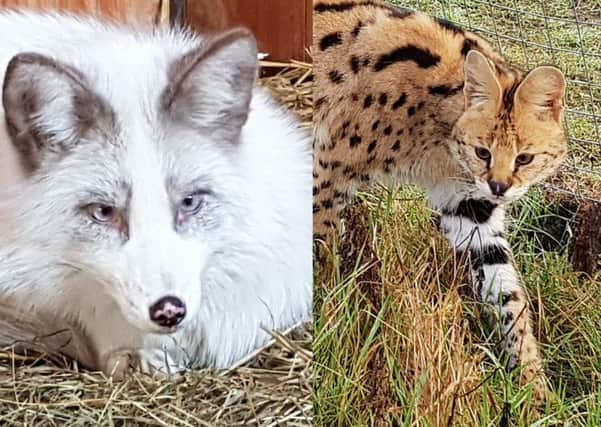White fox and serval wild cat arrive at rescue centre near Boston from Belgium


It comes less then a week after the Ark Wildlife Park and Animal Rescue Sanctuary, in Stickney, took in a silver fox, which had been taken to a local vets over concerns it could not be tamed.
The white fox and serval, a type of wild cat native to Africa, arrived on Wednesday morning from Belgium’s Natuurhulpcentrum (Nature Health Centre).
Advertisement
Hide AdAdvertisement
Hide Ad

The Natuurhulpcentrum has been in operation since 1976 and provides temporary care for confiscated or neglected exotic animals and sick or injured animals that are indigenous to Belgium.
Both these new arrivals were found being kept illegally, in unsuitable conditions, by private owners and confiscated by Belgium authorities.
Jamie Mintram, head keeper and co-owner of the ARK, said: “The serval is a two-year-old male that the keepers have named Tembea, after the Swahili word for ‘walk’ or ‘leap’.”
“Servals are a medium-sized African wild cat, often nicknamed the giraffe cat. This is due to them having the longest legs, in relation to their body size, of any feline. They use their long legs to leap on their prey after they detect it with the help of their rather large ears.”
Advertisement
Hide AdAdvertisement
Hide Ad

Tembea is already making himself at home and his playful antics are a hit with the keepers and visitors alike, he added.
Michelle Mintram, resident fox expert and co-owner of the ARK, said: “The female white fox is a leucistic fox that was being passed off as a dog by her original owners. Leucism is a condition in which there is a partial loss of pigmentation in an animal. Unlike albinism, it is caused by a reduction in multiple types of pigment, not just melanin. Leucistic animals do not have red eyes; in fact, this stunning girl has the most incredible pale blue eyes that I have ever seen.
“Her arrival, along with Tembea, has been planned for several months and she is currently housed in our quarantine area. Her name is yet to be decided.
“Originally, we wanted to integrate her with our current fox group, however, since Dexter the silver Fox arrived as an emergency rescue last week and cannot be incorporated with the current group which already consists of a dominant male and two females, it now seems appropriate for her and Dexter’s to become companions. They certainly make a unique couple.”
Advertisement
Hide AdAdvertisement
Hide Ad

“We will introduce them to each other as soon as all veterinary checks have been completed and they have been given the all-clear. They will then remain together in the quarantine area until their purpose-built enclosure is complete.”
The ARK is still busy raising funds for the new enclosure and have almost reached the halfway mark towards their target.
If you would like to help, visit www.gofundme.com/548sr7-for-fox-sakeA donation can be made towards the building of the enclosure and the ongoing care of the animals.